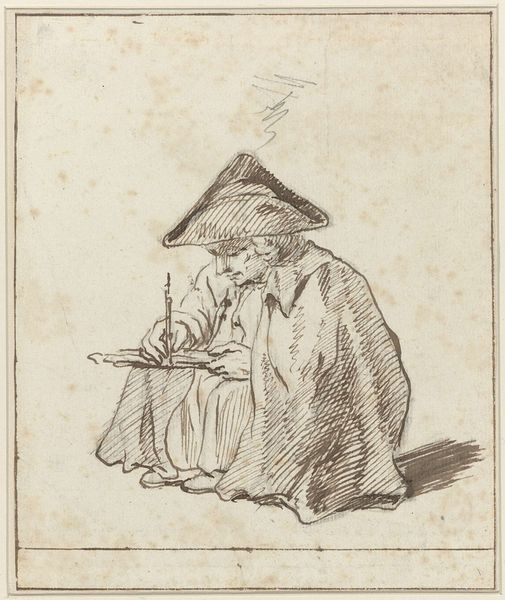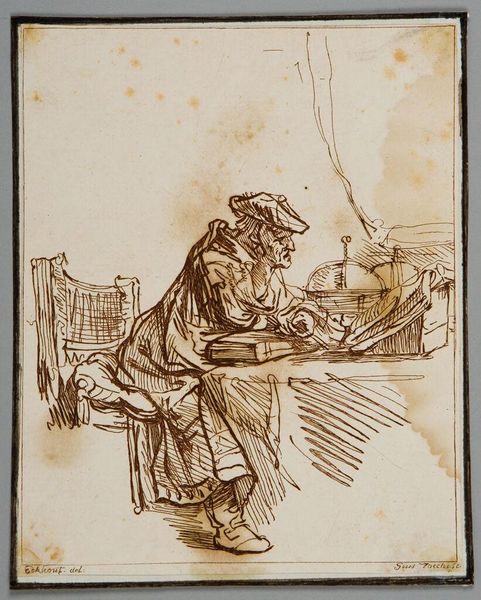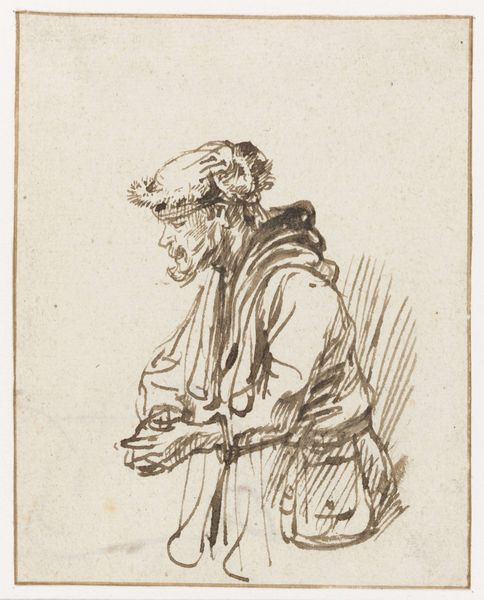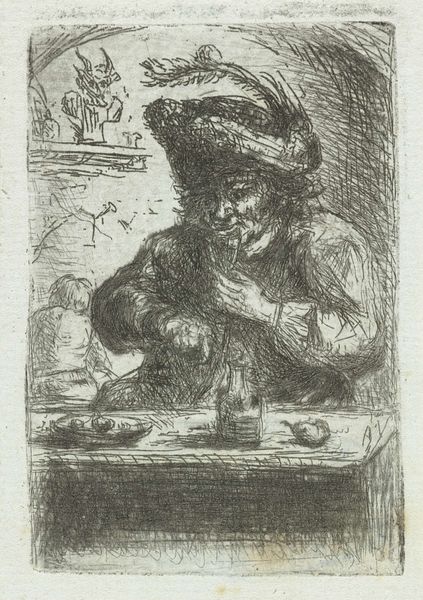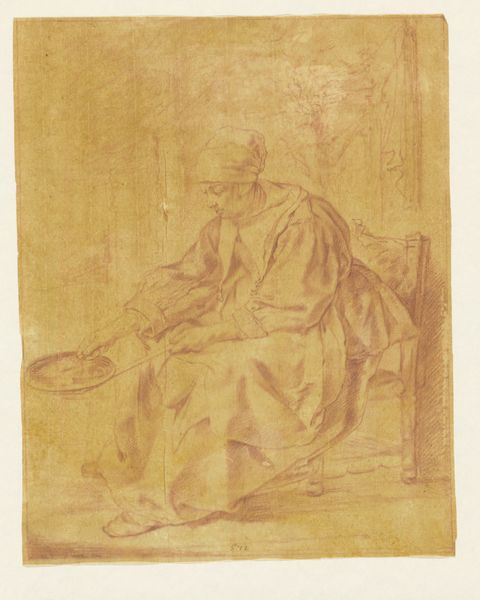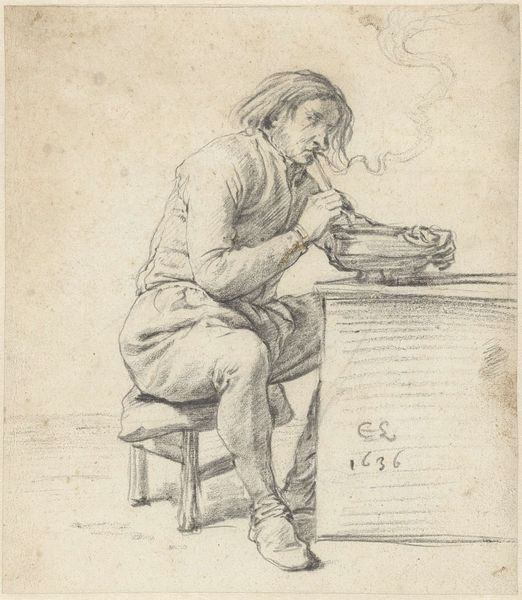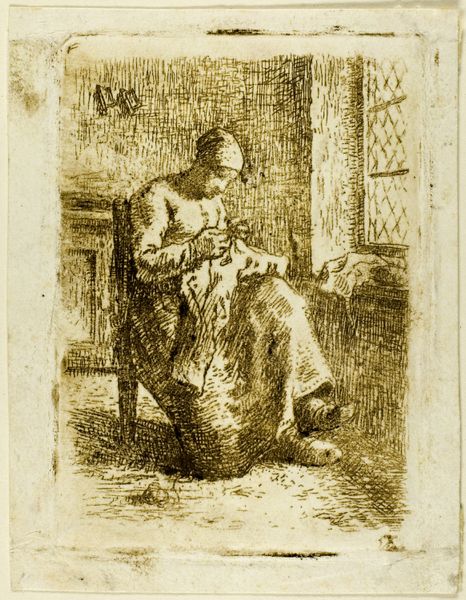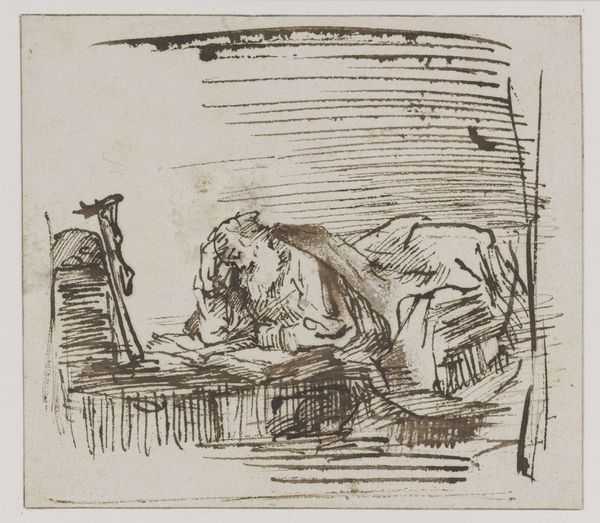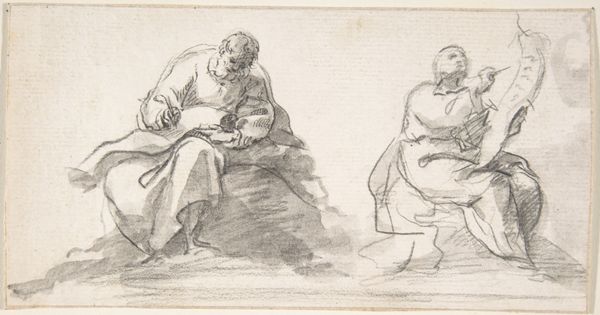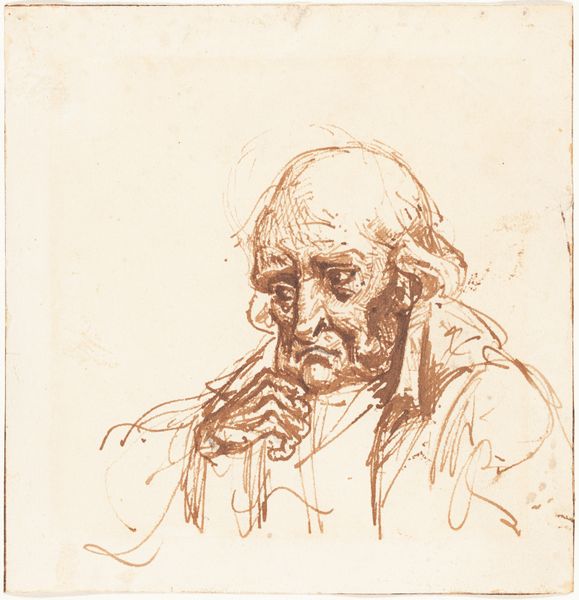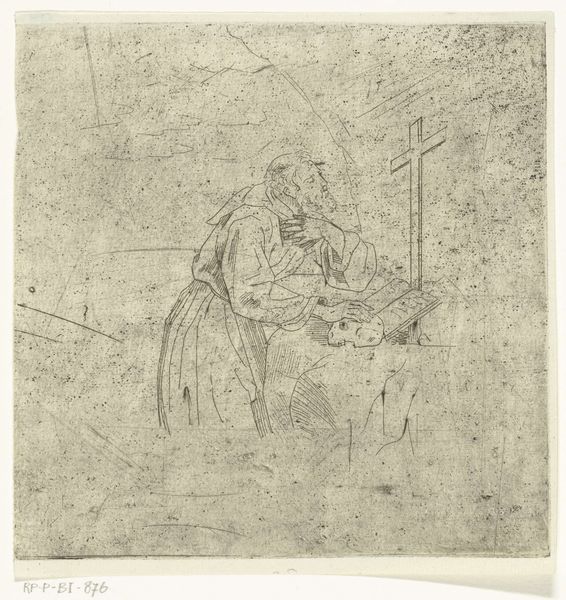
drawing, paper, ink
#
drawing
#
water colours
#
baroque
#
paper
#
ink
#
momento-mori
#
watercolour illustration
#
genre-painting
Dimensions: 11.3 x 14.7 cm
Copyright: Public domain
Curator: Salvator Rosa’s drawing, titled “Man Contemplating a Skull,” presents us with a solitary figure absorbed in morbid thought. Editor: My immediate impression is one of subdued intensity, conveyed through the washes of brown ink. The skeletal form juxtaposed with the man is unsettling, yet there is also a meditative quality. Curator: It's certainly meant to be. We see the "vanitas" tradition here – memento mori is very prominent. Consider how death, so central to existence, is represented across different class structures and cultural identities of 17th century Europe. The symbolic potency! The way the skull is staged signifies how inevitable ends justify contemporary, perhaps questionable, means. Editor: Absolutely, I'm seeing an embrace of mortality here. Beyond its macabre symbolism, note how the skull mirrors the man's own head. There is an evocative connection made via this subtle symbolic resonance. Notice the delicate treatment with ink. This drawing seems more about emotional response than it does physical precision. Curator: Let’s also unpack the identity of this man. What socio-political tensions are underlying here? Is this a member of the intellectual elite contemplating human fragility, or is there a critique embedded, maybe speaking about class differences as it concerns matters of death? Whose mortality truly mattered in Rosa's era, when rampant wars, colonisation, disease and famine ravaged mostly the marginalized? Editor: That is quite the insight, it certainly encourages one to reflect critically beyond the traditional view of memento mori, expanding beyond surface readings of genre. This brings such nuance. The figure almost disappears in a play of light and shadows, which prompts reflection on one's impermanence, yet also hints to much more insidious commentary of unequal access. Curator: Ultimately, in our examination today, Rosa invites dialogue between then and now. Visual languages of this Baroque era resonate, challenging norms of the art historical and demanding from us intersectional scrutiny. Editor: The symbolism provides a means to confront existential realities, a somber yet potent consideration in an ever-changing world, even now.
Comments
No comments
Be the first to comment and join the conversation on the ultimate creative platform.
